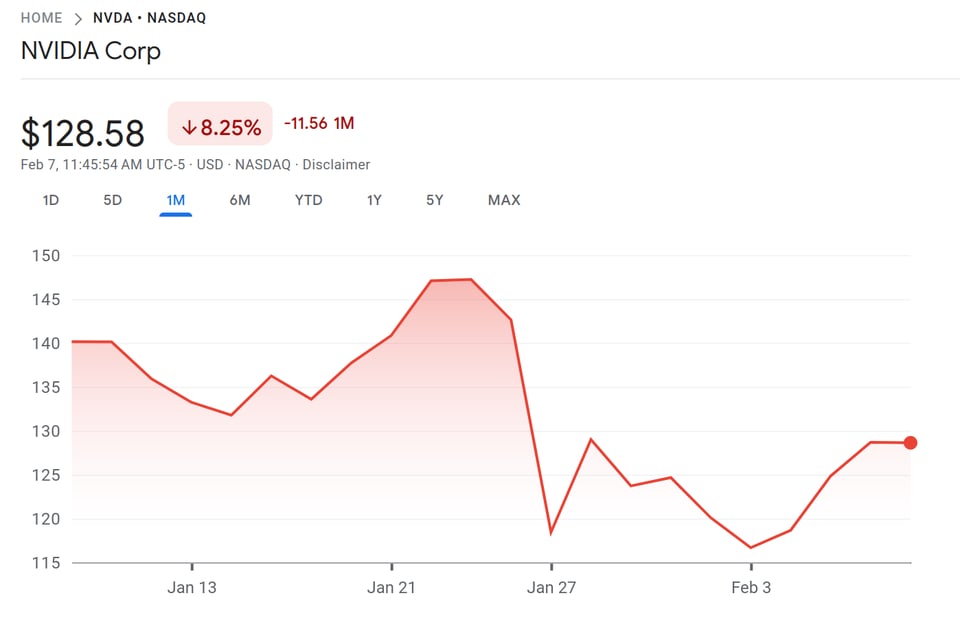#029 - Setting it in motion
What history tells us about giving things away for free.
You're reading Complex Machinery, a newsletter about risk, AI, and related topics. (You can also subscribe to get this newsletter in your inbox.)

Picking up where the previous issue left off ...
Playing the what-if game
Try this if you're looking for a fun mental exercise:
- Map out a sequence – a recipe, a chemical reaction, a business process, whatever.
- Imagine altering it – stretch or shrink the time scales. Reorder the steps. Modify inputs and outputs. Remove some inputs altogether.
- Take a step back to see what changes as a result. Does it keep working? Or veer off in a new direction? Does it fall apart?
This will both test your understanding of the process and uncover new ideas. If you reorder the sequence of events for a loan, for example, you get a credit default swap – a suitable insurance policy against default. And the "dropout" technique for neural networks, by randomly zeroing out inputs during training, improves model performance.
This gedankenexperiment also sheds light on opportunities and risks. Consider a business process in which you simulate the loss of a supplier or a price hike on a key ingredient. (Many restaurants are feeling this right now, with the spike in egg costs.) Or you can go the other way, and imagine that a key ingredient has become free overnight.
That last one is top of mind in the technology space. By open-sourcing its "R1" genAI model – one small enough to run on a professional-quality laptop, no less – DeepSeek has dramatically altered the decision calculus of the AI landscape. One friend, who calls this the "laptop as a supercomputer" moment, poses the question:
What happens when the cost of AI goes to zero?
Light the fuse
History will tell us a thing or two. DeepSeek's decision to release R1 for free holds parallels to two pivotal moments in history. The first is the 1990s tech boom. You know, the happy part of the Dot-Com era.
(I had to vastly oversimplify this segment for brevity. As I sketched it out I realized it could easily balloon into a longer paper or even a book. Which is … Actually, I'm putting that on my list. As soon as I get this next book out. More details on that later.)
The idea of free, open-source software (OSS) was nothing new in the late 1990s. But the energy behind the early internet craze increased interest in open source, creating a feedback loop that ramped up adoption of existing projects and inspired the creation of new ones. Companies that already had an in-house tech team could trim costs by moving to free tools. And companies that didn't have internal software development efforts, well, they now had an easier time trying it out.
Then there were the individuals. Suddenly anyone could grab a full suite of software dev tools and poke around. Hobbyists could learn C, C++, and Perl for the low cost of a book and their spare time. Professional developers could experiment with code at home, after hours, without touching their employers' systems.
The efforts of these businesses and individuals led to the long tail of software. Anyone could just build whatever they wanted, whenever they wanted, to address any problem that came to mind.
More importantly, the world of free, open-source software survived the Dot-Com collapse.
Open source's continued existence paved the way for cloud computing. That grow-with-you, pay-as-you-go infrastructure in turn powered innumerable startups. The free operating systems didn't just power web server farms, either. They also made it easier to inject a computer into an arbitrary object. (Seat-back entertainment systems, anyone? So-called "smart" home devices? Mobile phones?) Open-source tooling, running on cloud platforms, fueled the many structural evolution of the data space – from the early days of predictive analytics and Big Data, to data science and machine learning, to today's generative AI. Yes, you could pay for pricey statistical analysis tools and even pricier, specialized compute systems on which to run them. Or you could grab scikit-learn (then later, TensorFlow and Torch) and be on your merry way.
That early combination of free software and Dot-Com popularity triggered a chain reaction that is still running today. Commercial tools for software development and data analysis continue to exist, as do commercial operating systems. But the price tag of "free" offers a compelling choice, one that has opened the door to far more exploration, use cases, and opportunities than could have been afforded by the commercial tools alone.
The second pivotal moment was the Soviet Union's decision to share its new Avtomat Kalashnikova sorok-sem' – the original Kalashnikov automatic rifle – with allies. They started by shipping rifles, and eventually gave those countries the blueprints in order to build them in their own factories. That led to even more sharing, as well as localized variants of the weapon – "AK-47" has become an umbrella term for different twists on Mikhail Kalashnikov's original rifle. And these weapons, which have a reputation for ease of use and simplicity of maintenance, have since spread around the world to play a key role in armed conflicts.
With that, we can revisit DeepSeek's decision to give away R1. Seen through the lens of open-source software and the AK-47 (which is, arguably, an open-source weapon):
Will R1, or another free-to-use genAI model, kick off a similar scale of evolution and revolution in AI?
Next time …
I have more to say about the impact of AI's cost going to zero. But I'll save it for the next issue.
Three numbers
In the previous newsletter I mentioned that the DeepSeek news had hit Nvidia's share price. It's since recovered somewhat:

That's great, isn't it?
Yes. And also no.
This is one of those cases in which both the fans and the skeptics are right. [...] Because when it comes to investments, only three numbers matter:
1. The price at which you got in.
2. The price at which you got out.
3. How much you managed to sell as you made your escape.
The unrealized gains and losses in between are good for casual conversation, but little else.
Turnabout, fair play, and a form of flattery
OpenAI has accused DeepSeek of stealing its content to train models.
Hmmmmmmm.
Imagine that!
Or, don't.
I have nothing to say here. But WSJ's Joanna Stern certainly has a few words.
In other news …
- The first stage of the EU's AI Act recently went into effect. (Les Echos 🇫🇷)
- Would you trust your eyelash extensions to a robot beautician? (Financial Times)
- Companies want AI bots to do more work. Are they prepared to train and manage them as digital employees? (Business Insider)
- AI company Anthropic has high hopes for AI agents. (MIT Technology Review)
- Trying to avoid Google's AI-based search summaries? Add swear words to your query. (Gizmodo)
- A brief history of genAI's use in scams and other misdeeds. (Le Monde 🇫🇷)
- DeepSeek's AI chatbot – the service hosted by the company, not the open-sourced R1 model itself – censors its answers. But you can get it to open up by chatting in "leetspeak" (l33tsp43k) internet slang. (I'll have more to say about this next time around.) (The Guardian.)
- Per the US Copyright Office, art generated in part by an AI model "should be eligible for copyright protection under existing law in most cases." Emphasis on the words "in part." (Washington Post)
- Can't be bothered to call a business to ask for information? Google's new "Ask for Me" tool gets an AI system to call on your behalf. Am I the only one getting flashbacks of Grubhub's 2022 "free lunch" fiasco promotion? Google has at least notified the businesses in question. But they are still treating these phone calls like web sites they can mine for data. And they're doing it in a way that might eat up the business's time. (The Verge)